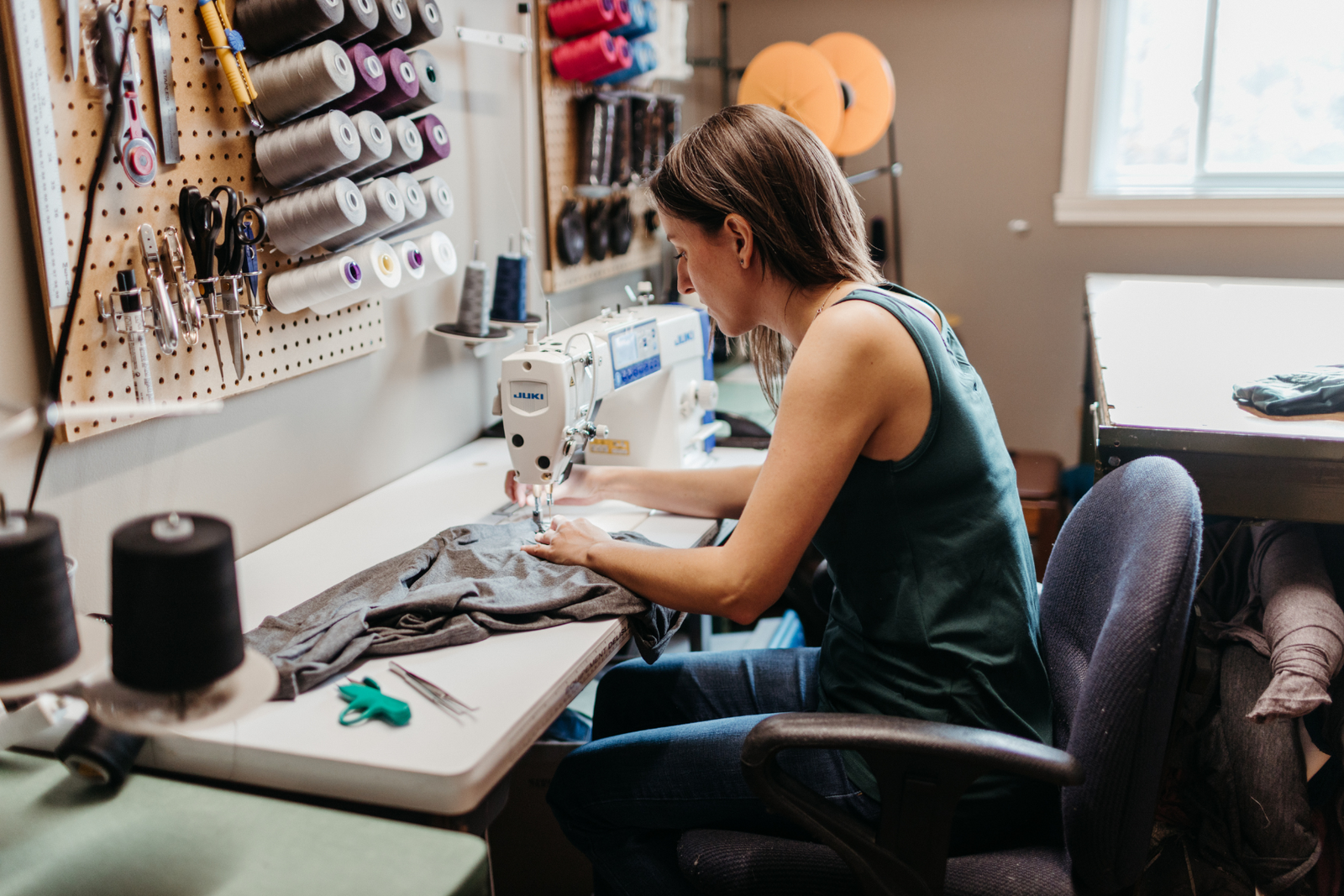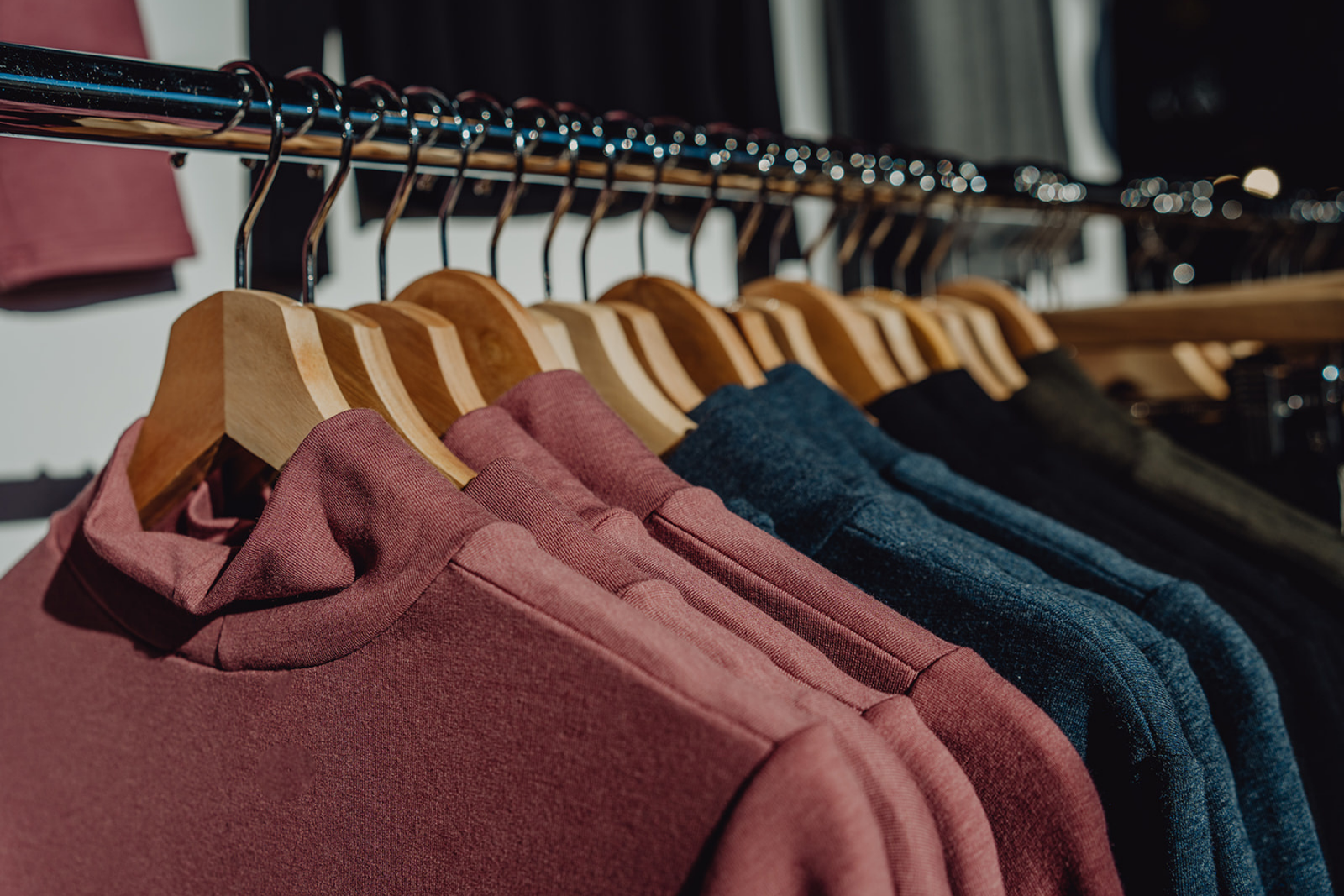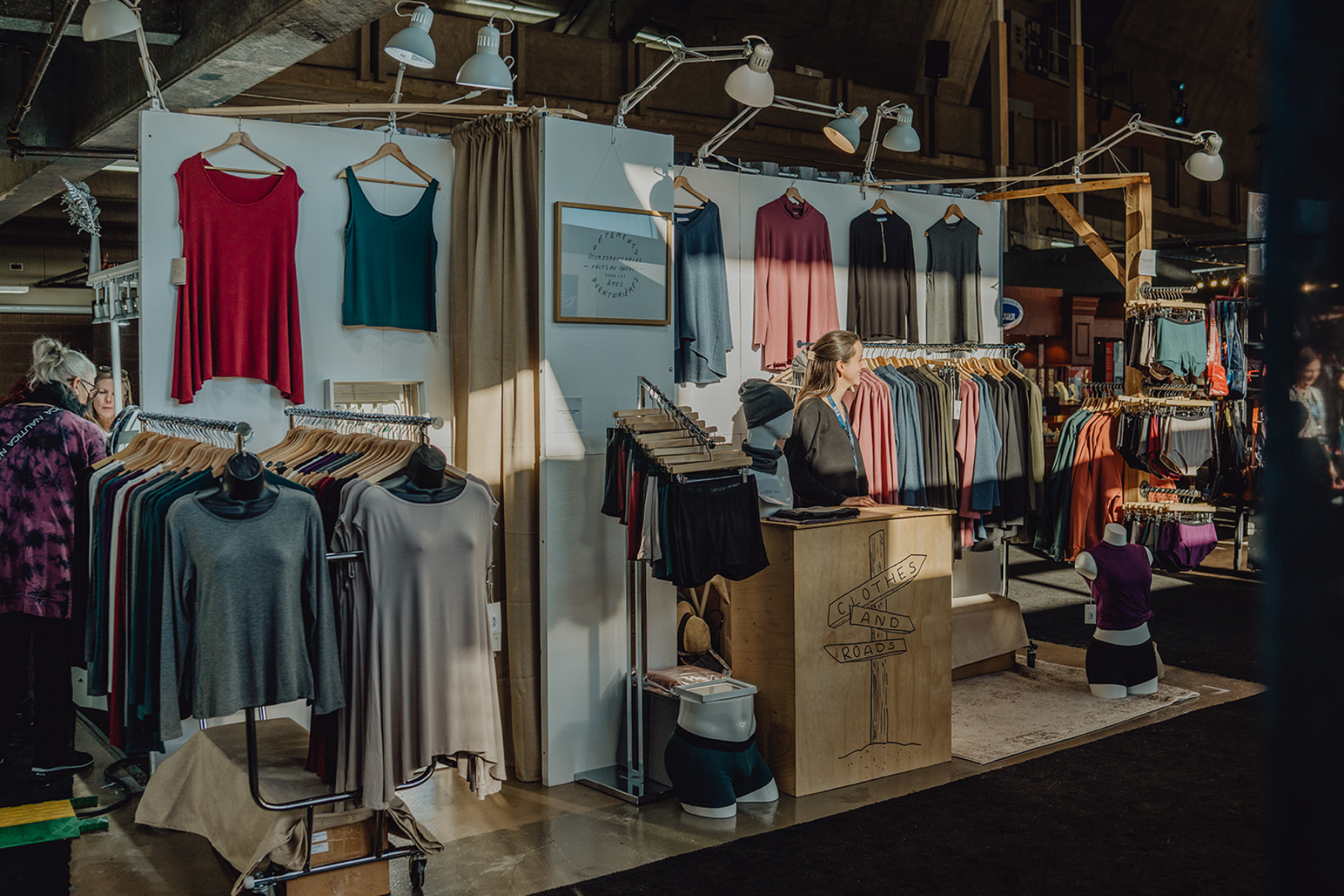FREE SHIPPING in Canada on orders $150 + 📦 Online orders placed after December 18 will ship starting January 5
FREE SHIPPING in Canada on orders $150 + 📦 Online orders placed after December 18 will ship starting January 5
Shop

Why I chose to create slow fashion locally crafted in Quebec
by Marie-Eve Bournival-Paré July 05, 2021 2 min read
Have you ever noticed that even though we wear clothes every single days of our lives, we have a tendency to forget that these items are such an important part of our lives? I mean, we can count how many times we go to the gym or eat dessert in a week, but we don’t really count the number of clothing items we wear in a week. But still, we do wear a lot of clothing items, on a daily basis.
I believe that, since apparel can now be found at ridiculously cheap prices (hello, fast fashion!), we don’t take the time anymore to sew and repair our garments like our grandparents did. I believe all that contributed to make us loose sight of the real value of the clothes we wear, and the value of the savoir-faire behind each and every garment.
The more I learn about sewing, patternmaking and just the fashion industry in general, the more it makes me want to inspire people to care for their clothes. After all, loved clothes last longer, and environmental impact is minimized too. Double win!
When I started to learn to sew for myself, this is when I actually realized that a $ 10 t-shirt didn’t make sense at all.
So many people take part in the realization of an item of clothing. From the design, material sourcing, to the patternmaking, sample making, cutting, sewing, labelling, merchandising, etc. A lot of people along the way need to get paid. Patternmaking and sewing alone was taking me a great deal of time.
So I thought, how can everyone get paid fairly in the supply chain with a 10$ t-shirt ?
It makes you wonder. For sure, somebody, somewhere pays the price with poor wages, bad work conditions, for example. For that reason, producing slow fashion locally in Quebec was really important to me.

So no, our t-shirts are not $ 10. But you sure do encourage the local economy, people who worked hard to learn the skills needed to make sustainable clothing. Plus, you can have the peace of mind that wages and working conditions are fair.
If you want to learn more about our locally crafted minimal apparel, here are some interesting behind the seams articles for you on our blog.
Marie-Eve Bournival-Paré
Hi! I am the designer and founder of Clothes & Roads, I love tea, succulent plants, yoga, chocolate and baby animals. Between designing new clothes for my brand, managing my social accounts, the production and the business finances, I like to share on the blog a diversity of subjects like slow fashion, travel, zero waste, local products, minimalism and vanlife! 🚐
Leave a comment
Comments will be approved before showing up.
Also in Blog

Who Made My Clothes? 9 Facts About the Creator of Clothes & Roads
by Marie-Eve Bournival-Paré April 22, 2025 6 min read
April marks Fashion Revolution Month, a global movement that encourages consumers to ask the question: Who made my clothes? It’s an opportunity to highlight the people and processes behind ethical, transparent, and sustainable fashion. In this spirit, I thought I’d share a few facts about myself so you can get to know the creator behind Clothes & Roads and learn a bit about my slow fashion journey. So here are 9 fun facts about me!

Practical Guide: How to Make the Most of Your Craft Market Shopping Experience
by Marie-Eve Bournival-Paré March 12, 2025 5 min read
Visiting a craft market can be a wonderful experience but planning your visit in advance is key to making the most of it. This practical guide helps you optimize your experience so you can shop with intention while supporting local makers. Read on to make the most of your next craft fair visit!

Five Things I Love About Craft Markets: The Benefits of Shopping from Small Businesses and Local Designers
by Marie-Eve Bournival-Paré March 12, 2025 5 min read
As the designer and manufacturer behind Clothes & Roads, I attend craft markets to showcase my handmade eco-conscious minimalist apparel. Being part of these exhibitions is always such a highlight for me as a business owner. But beyond participating as an artisan, I also love exploring craft shows as a visitor. There’s something so inspiring about wandering from booth to booth, meeting other makers, and discovering beautiful, locally made artisanal products. Craft markets are such a unique way to connect with the small business community and celebrate diversity in creativity.
Discover five things I love about craft fairs.
Recent Articles
- Who Made My Clothes? 9 Facts About the Creator of Clothes & Roads
- Practical Guide: How to Make the Most of Your Craft Market Shopping Experience
- Five Things I Love About Craft Markets: The Benefits of Shopping from Small Businesses and Local Designers
- 7 Steps for a Successful Craft Show: How my apparel shop prepares for craft fairs
- Your 2024 Favorites at a Glance: Our Bestsellers
- Stay Cool and Comfortable with Our Thigh-Length Anti-Chafing Bamboo Women’s Boxer: The Ultimate Summer Must-Have
- Let’s talk zero waste and the fashion industry
- What Is a Capsule Wardrobe and Why Should You Have One?
- 7 Ways to Create a Sustainable and Socially Conscious Wardrobe
- 6 Timeless and Ecofriendly Basics Every Capsule Wardrobe Should Have
Subscribe
Wanderlust. News. Sales. Rewards, and more.
Subscribe to our newsletter and get 10 % off your first purchase.

Get on board !
Wanderlust. News. Sales. Rewards, and more.
Subscribe to our newsletter and get 10 % off your first purchase.
Net Orders Checkout
| Item | Price | Qty | Total | |
|---|---|---|---|---|
| Subtotal |
$0.00 |
|||
| Shipping | ||||
| Total | ||||


